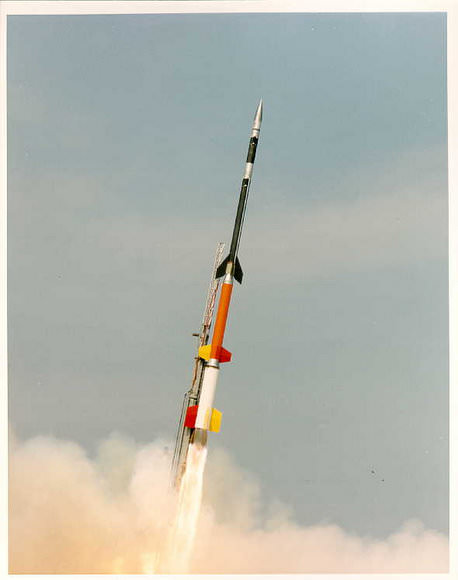Reports of UFOs skyrocketed last weekend along the east coast of the US after a NASA launched an experiment to study an unusual phenomenon called noctilucent clouds, or 'night shining' clouds. The Charged Aerosol Release Experiment (CARE) was conducted by the Naval Research Laboratory and the Department of Defense Space Test Program, created artificial noctilucent cloud using the exhaust particles of the rocket's fourth stage at about 173 miles altitude. It created a bright object with a fan-shaped tail, prompting calls of concern from residents in Virginia and Massachusetts to local authorities. But this object was definitely identified.
The experiment used a Black Brant XII Sounding Rocket launched from NASA's Wallops Flight Facility in Virginia on September 19, 2009 at 7:46 p.m. EDT (2346 GMT). [/caption] Scientists aren't sure what causes noctilucent clouds. Some think they're seeded by space dust. Others suspect they're a telltale sign of global warming.
See our previous post with pictures about noctilucent clouds.
Data collected during the experiment will provide insight into the formation, evolution, and properties of noctilucent clouds, which are typically observed naturally at high latitudes. In addition to the understanding of noctilucent clouds, scientists will use the experiment to validate and develop simulation models that predict the distribution of dust particles from rocket motors in the upper atmosphere.
Natural noctilucent clouds, also known as polar mesospheric clouds, are found in the upper atmosphere as spectacular displays that are most easily seen just after sunset. The clouds are the highest clouds in Earth's atmosphere, located in the mesosphere around 50 miles altitude.
They are normally too faint to be seen with the naked eye and are visible only when illuminated by sunlight from below the horizon while the Earth's surface is in darkness.
A team from government agencies and universities, led by the Naval Research Laboratory, is conducting the experiment. In addition to the Naval Research Laboratory, participants include the DoD STP, NASA, University of Michigan, Air Force Research Laboratory, Clemson University, Stanford University, University of Colorado, Penn State University and Massachusetts Institute of Technology/Haystack Observatory.
Source: NASA
 Universe Today
Universe Today
